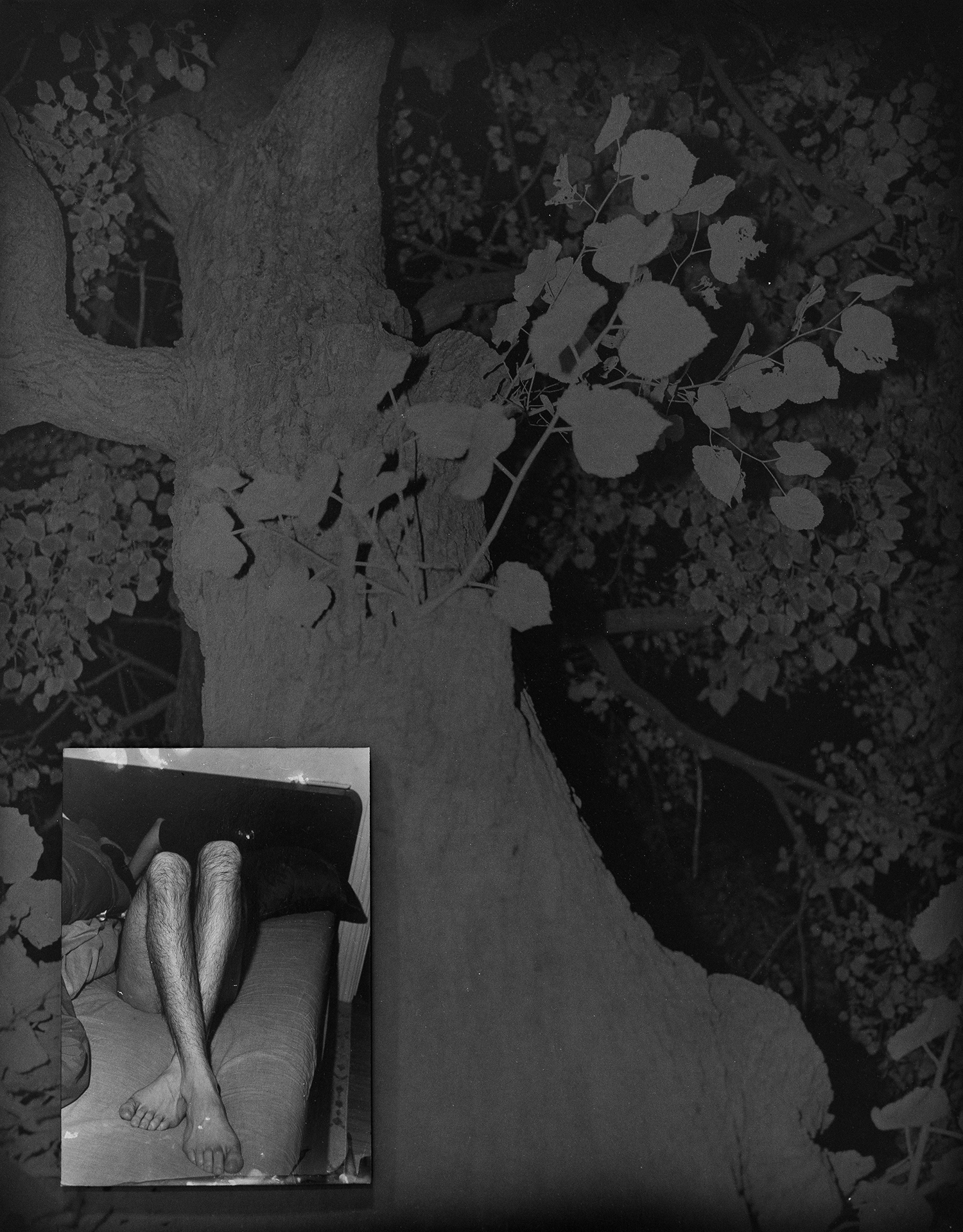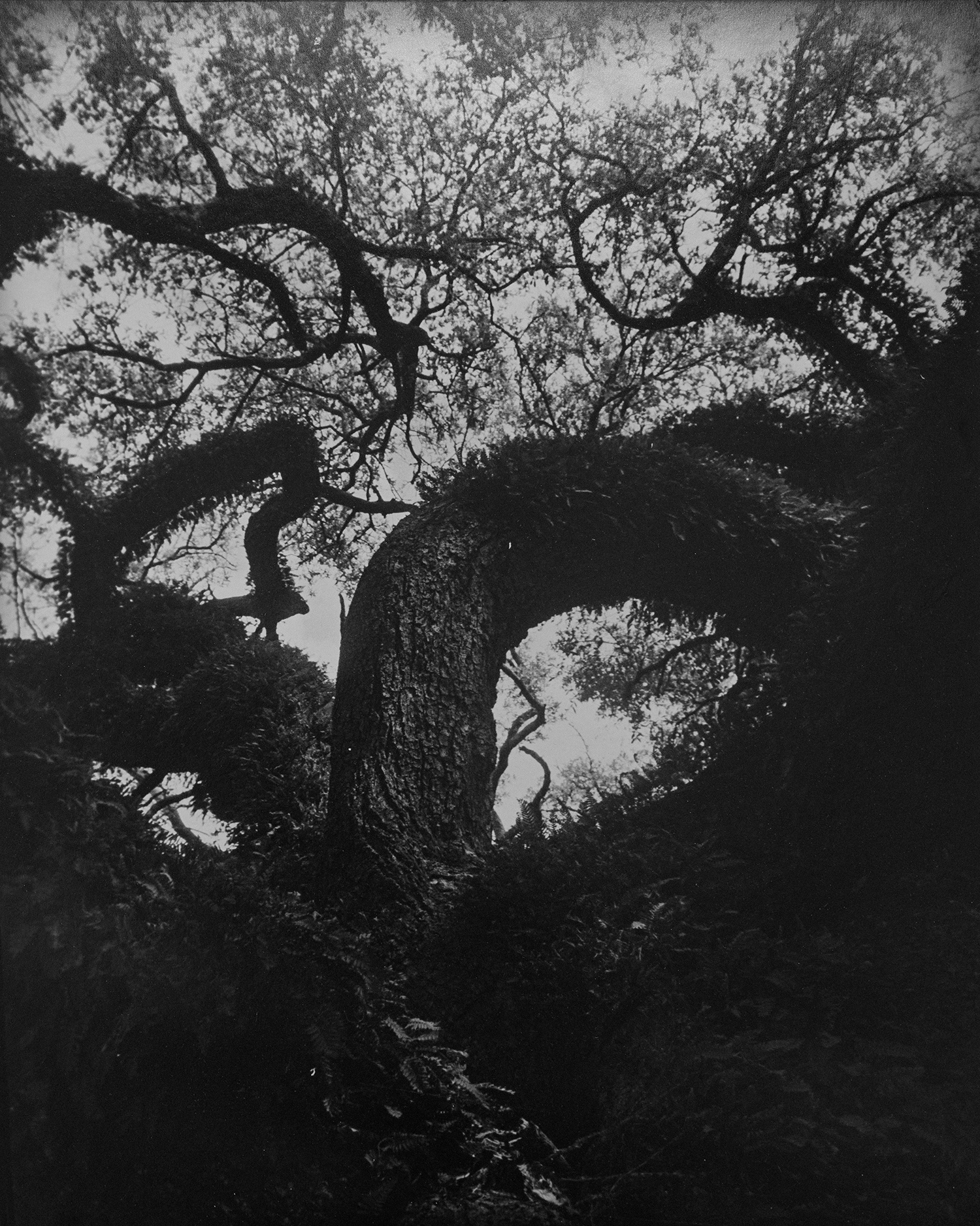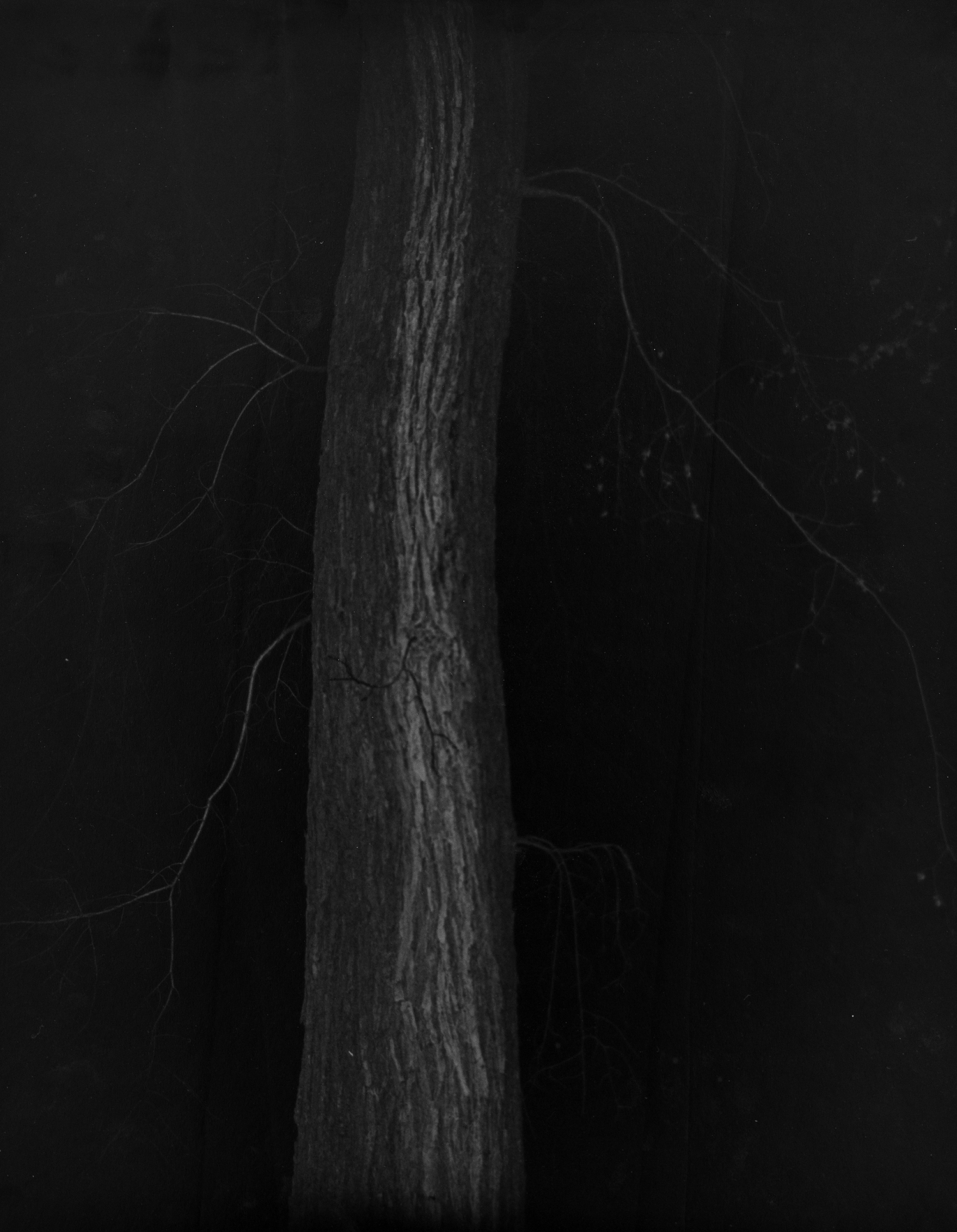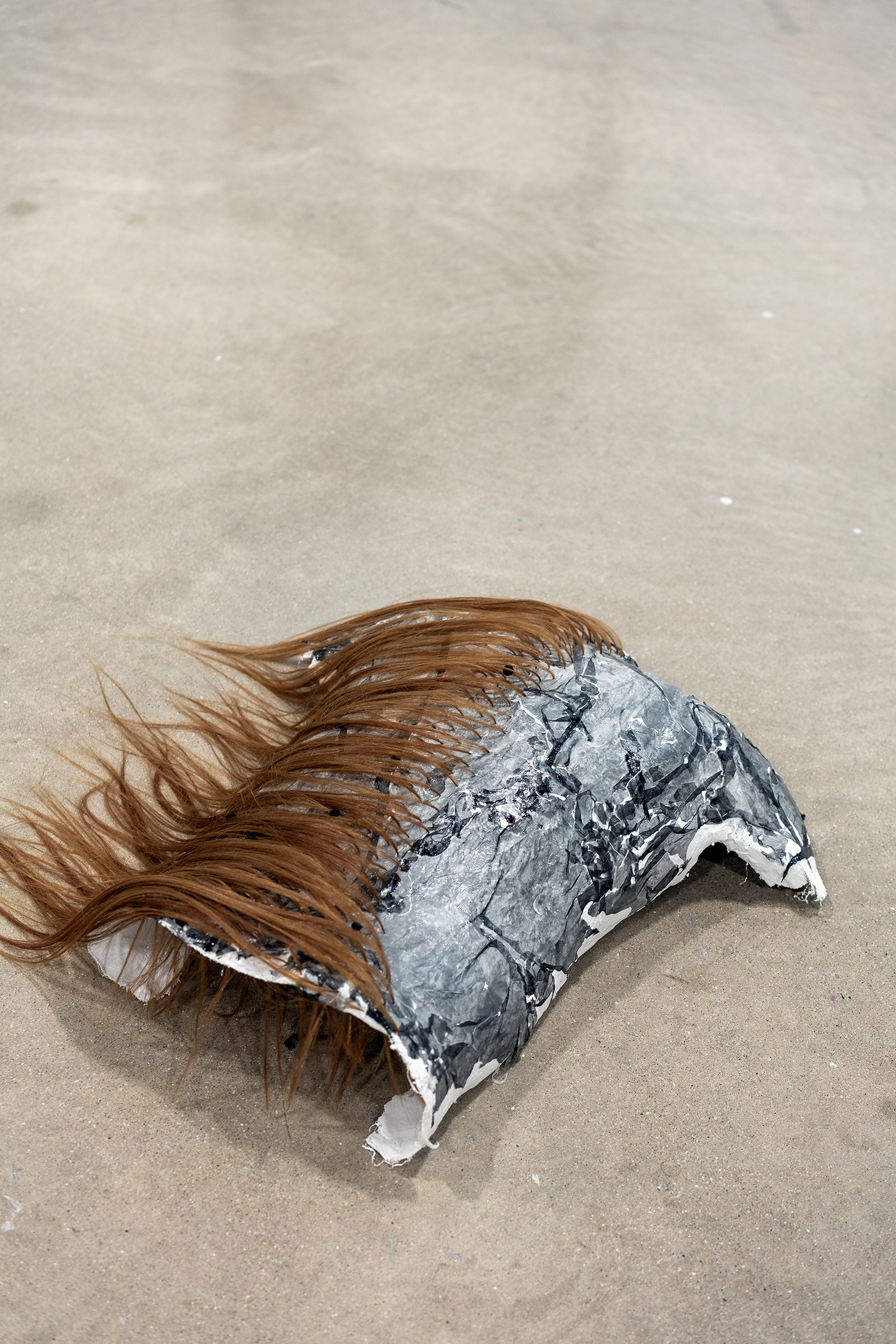The Origins of Photophobia (The Grotto)
2024
16”x20” gelatin silver prints made on archival paper from 1982






Horse (Elijah’s Back) - plaster, natural and synthetic hair, handmade rose petal beads, silver nitrate “skin”
*********
tl;dr: gelatin silver prints on paper from 1982 have lived and continue to live; the grotto the underworld blurs boundaries and carries a tendency to dissolve; one may be able to desire holiness into existence
*********
The discipline of photography carries with it an unfortunate historical burden of being expected to transmit some kind of documentary truth, to provide evidence of the real, and sometimes of the unreal (spirit photography, aural photography, and so on). Because the camera is understood to see what the eye cannot see, there is a presumed empirical weight resting on a captured image. Not only is this an unimaginable amount of faith to put into a “tool,” it carries with it an implication of a universal truth that we (or the camera, by extension) can adequately document.
“Photography does not simply replicate reality, but it provides a ‘zone’ of experience; it is not the experience of that which it depicts but instead a site, a zone, through which something can be experienced. In other words, it is an experience of an experience, perhaps a mediated experience of that which cannot be encountered.” - Tom Slevin (The Zone, p. 2)
Considering the above quote, almost reminiscent of Plato’s concept of mimesis - art being an imitation of the “real” world which is in itself an imitation of the godly world, an imitation twice removed - we can perhaps allow the amicable release of the burden of truth that has been ascribed into the camera’s workings, and begin to think of a photograph as a re-experience, or a “zone.” Slevin continues:
“The emergence of ‘magic’ occurs in the moment whereby one dimension of experience is encountered within another, where lived experience is re-presented within the zone of an image…Is ‘magic’ not the process by which the world is represented whereby hitherto concealed dimensions of reality are revealed?”
If photography is characterized as being of indexical nature, a nature in which the photograph is forevermore tied to its referent or to its subject with no ability to come into existence without firstly the fact of existence of its referent, it must then haunt us in a different way than an iconic or symbolic form of art (think: a traditional painting, sculpture). The photograph’s alleged representations of the Real World throws our trust all over the place. Because we often recognize fragments of the photograph as tied to some kind of experiential understanding of reality, the magical and haunting reaction to an experience of a photograph can feel more paranormal and supernatural than if it had occurred in a non-indexical work. The image must be released from the Real: the photographs and their sensitive, hedonistic relationships to light, chemical, and touch must be freed in order to let us create experiences of the unknown, the unseeable, the un-real, the underworld. Or, they can choose to omit even those sights from my view.
The Origins of Photophobia: The Grotto explores this magical zone of production, and how we, as viewers, re-write the narratives and experiences of a photograph as we witness it. Photophobia, a misnomer - not actually a fear of light but an abnormal sensitivity of the eyes to light, provides an appropriate frame in which to create this work due to the material of the paper, the alchemical nature of the wet darkroom process, and the consideration that a metaphorical aversion to light may be caused by living in the grotto.
This series of gelatin silver photographs was created by working with archival photosensitive paper from 1982 that is “fogged,” or, improperly stored and therefore accidentally exposed to light prior to development. When the paper is eventually intentionally processed, it tends to produce a solarized or “x-ray” effect due to its inability to develop proper white-toned highlights. If it’s not too gratuitous to anthropomorphize the paper, which I can and will do, it in itself is photophobic due to its inevitable changing, or what feels like actual scarring, when it is exposed to light. The paper has permanently changed over time prior to ever being intentionally inscribed by light, marked by the different light leaks that have penetrated its allegedly safe holding enclosure over the past 42 years - creating its own aura - surprising me and removing much of my agency over its behavior and tonality. It’s lived its own life.
The grotto is the antechamber (the entryway) into the underworld. Physically a cave or series of caves, an earthly chamber, the grotto extends romance, wetness, depth, and the grotesque through its touch. One may enter the grotto, but they must trespass the pleasure principle in order to stay. The grotto demolishes the thin connective tissue that divides this world and the supernatural world, and in its darkness all boundaries blur, dissolve, and create potentials for freedom and for magic to enter into a subject while they stand shedding in the shadows of the underworld.
“The grotto has…carried the burden of the unacknowledged and unacceptable divine.” - Victoria Nelson (Grotto, An Opening, p9)
I’m drawn to the liminal space of caves and their interaction with images: cave drawings that create iconic representations of the outside world. I aim to create worlds of mythic characters, of hybrids that don’t fully exist in the natural world or in the supernatural world. Through building narratives of bodies, landscapes, magic, and the underworld, the photographs create an uneasy atmosphere in which unknown forces are just about to reveal themselves: an atmosphere in which the self is transformed and one finds themselves sometimes completely outside of their body, and at other times sweating in the corporeality of their form. These caves create spaces of carved-out, ominous, dimly lit opportunities in which we realize that the body, the spirit, and identity are not fixed. The bodies in this series are possessed, affected heavily by the condition of the grotto and inhabited by something other than their natural state.
Must one have the desire to find the grotto in order to find the grotto? Slevin claims that because we may desire both the creation and the occurrence of magic, “desire is projected and inscribed into photography’s zone” (Slevin, 5). I’m not sure who is most tenderly affected by the supernatural - those prior atheists who have had holy experiences that forever altered the course of their lives - or those who themselves desired holiness into existence. Those who may have searched for the depths of the grotto and decided to stay there for a while. The grotto’s blurring of life and death, of the self and the Other, of the body and nature allows me to believe that one can produce holiness simply by desiring it. I sit in my chair.
You cannot convince me that the grotto does not hold deep within it seduction and allure: a place underneath the earth, secluded, contained, exhibiting trace occurrences of the transcendent, of the sublime - and therefore of danger, the uncanny, and the long-sought-after potential for peace. Perhaps we might be able to entangle ourselves with the grotto as a metaphor for understanding the culture that we create and re-create, the images we experience and re-experience, and the red threads that connect everything, including the body, morality, history, religion, darkness, and magic. Where is salvation?
When I emerge from the grotto I find myself languishing in ravished bouts of photophobia. My eyes can’t adjust - the sun is too bright. I like it best this way.
Slevin, Tom. 2023. "The Zone of Photography: Magic, Ghosts and Haecceity" Arts 12, no. 4: 157. https://doi.org/10.3390/arts12040157
Nelson, Victoria. "One. grotto, an opening" In The Secret Life of Puppets, 1-24. Cambridge, MA and London, England: Harvard University Press, 2003. https://doi.org/10.4159/9780674041417-002
